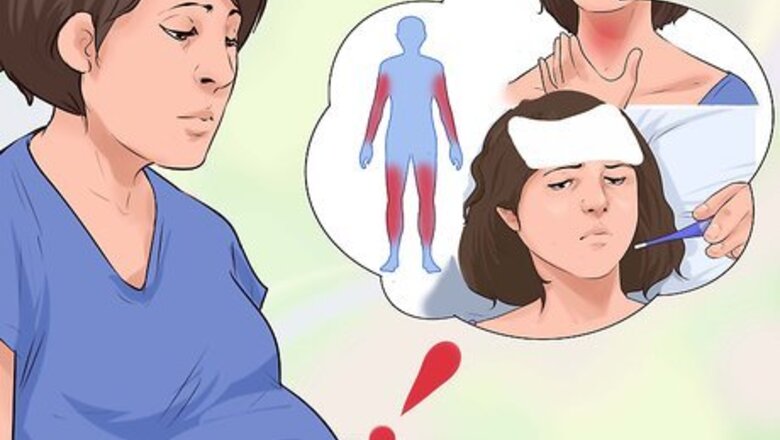
views
X
Trustworthy Source
National Health Service (UK)
Public healthcare system of the UK
Go to source
Determining If You are Infected
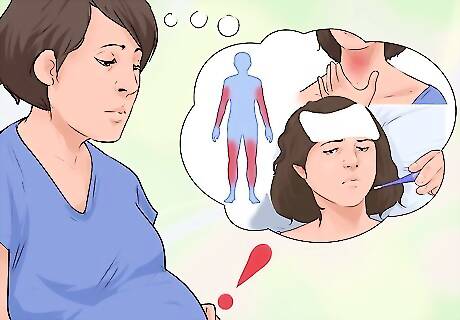
Recognize the symptoms of an acute infection. 80 to 90% of the people who get infected with toxoplasmosis don’t show any symptoms at all and are never aware of it. Some people get flu-like symptoms that may last for a few weeks. Because toxoplasmosis is dangerous for unborn babies, get checked by a doctor if you have these symptoms while you are pregnant: Fever Muscle aches Fatigue Sore throat Swollen lymph glands

Get tested if you have a heightened risk of a dangerous infection. Toxoplasmosis is a serious danger to people with weakened immune systems and babies. You can be tested with a blood test conducted at your doctor’s office. Ask your doctor to be tested if: You are pregnant or planning to become pregnant. Toxoplasmosis can be passed to an unborn baby in utero and can cause severe disabilities. You have HIV/AIDS. HIV/AIDS weakens your immune system and makes you more vulnerable to complications resulting from toxoplasmosis. You are receiving chemotherapy treatments. Chemo weakens your immune system to the point where an infection that normally wouldn’t be a problem suddenly becomes a real threat. You are taking immunosuppressant drugs or steroids. These medications can make you more vulnerable to serious infections and complications from toxoplasmosis.
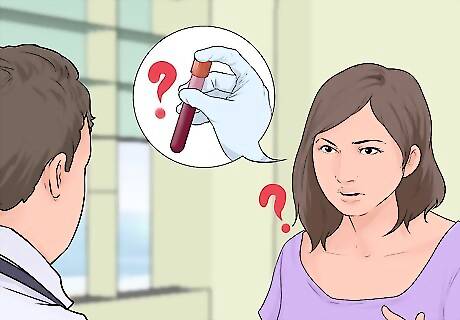
Ask your doctor to explain the test results. The blood test will show if you have antibodies against toxoplasmosis. Antibodies are the proteins your body produces to fight the infection. This means that the test doesn’t test for the parasites themselves, making the interpretation difficult. A negative result could mean either that you are not infected or that you have been infected so recently that your body has not yet made antibodies. The latter can be ruled out by retesting a few weeks later. A negative result also means that you do not have immunity against a future infection. A positive result could mean one of two things. It could mean you are currently infected or it could mean you were previously infected and the antibodies reflect your immunity. If you have a positive test, the Centers for Disease Control and Prevention suggest that the results be verified by a specialist laboratory which can analyze the different types of antibodies to help determine whether the infection is current.
Diagnosing and Treating Mothers and Babies
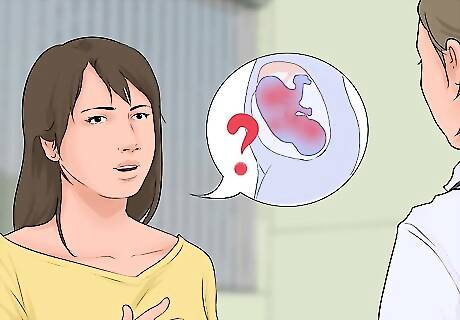
Discuss the risks to your baby with your doctor. Toxoplasmosis can be transmitted to the baby during pregnancy even if you don’t feel ill. The risks to your baby if she contracts it include: Miscarriage and stillbirth Seizures Swollen liver and spleen Jaundice Eye infections and blindness Hearing loss which appears later in life Mental disabilities which appear later in life
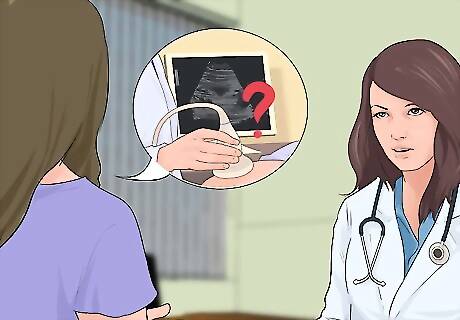
Talk to your doctor about testing your baby in utero. There are two ways that the doctor might suggest examining your baby. An ultrasound. This procedure uses sound waves to produce an image of the baby in the uterus. It is not dangerous for the mother or the baby. It can show whether the child has signs of an infection such as excess fluid around the brain. However, it does not rule out the possibility that there could be an infection which didn’t exhibit symptoms at that time. Amniocentesis. This procedure involves inserting a needle through the wall of the mother’s abdomen and into the sac of fluid that surrounds the baby and extracting some of the fluid. The amniotic fluid can then be tested for toxoplasmosis. It has a 1% risk of causing a miscarriage. This test can confirm or exclude a toxoplasmosis infection, but if the child is infected, it won’t be able to say whether the child shows signs of having been harmed.

Ask your doctor about medication for yourself. What the doctor recommends may vary on whether the infection has spread to your baby or not. If the infection has not spread to your baby, the doctor may recommend the antibiotic spiramycin. This medication may sometimes prevent the infection from being transmitted to your baby. If your baby is infected, the doctor will probably recommend that you alternate spiramycin with treatments of pyrimethamine (Daraprim) and sulfadiazine. These medications would likely only be prescribed after the 16th week. Pyrimethamine may prevent you from absorbing folic acid which is important for the baby’s development and cause bone marrow suppression and liver problems. Ask your doctor about side effects for you and your baby before you take them.
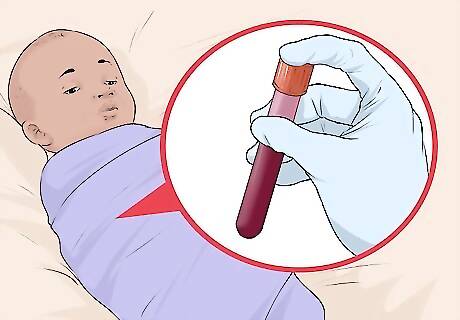
Have your baby checked after birth. If you were infected with toxoplasmosis during the pregnancy, your doctor will check the infant at birth to determine whether there are signs of eye problems or brain damage. However, many children do not develop symptoms until later, so your doctor may recommend a blood test. The Centers for Disease Control and Prevention recommends sending all blood tests of newborns to a specialized Toxoplasma Serology Laboratory in California for testing. Your baby may need to be regularly retested during the first year of life to confirm that he or she remains negative.
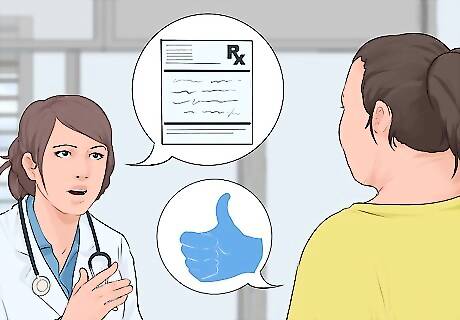
Follow your doctor’s recommendations for treating your newborn. If your baby is born with toxoplasmosis, the doctor may suggest regular monitoring, combined with medications. Unfortunately, if your baby has already been harmed by the infection, this damage cannot be undone. However, medications may help prevent further damage. Pyrimethamine (Daraprim) Sulfadiazine Folic acid supplements. This will be given because pyrimethamine may prevent your baby from absorbing folic acid.
Diagnosing and Treating People with Weak Immune Systems

Discuss treatment options with your doctor. Your doctor is likely to recommend different medications depending on whether your infection is active or dormant. Dormant infections occur when the parasite is inactive, but can become active again when your immune system is weak. Your doctor will probably recommend pyrimethamine (Daraprim), sulfadiazine, and folic acid supplements for an active infection. Another possibility is pyrimethamine (Daraprim) with an antibiotic called clindamycin (Cleocin). Clindamycin can cause diarrhea. If you have an inactive infection your doctor may suggest trimethoprim and sulfamethoxazole to prevent the infection from resurging.

Recognize the signs of ocular toxoplasmosis. Toxoplasmosis may cause serious infections in the eyes of people with weakened immune systems. The parasite can stay dormant in your retina and then cause an active infection years later. If this occurs, you will be given medications to fight the infection and steroids to reduce swelling in your eye. If scarring occurs in your eye it may be permanent. Go immediately to the doctor if you have: Blurred vision Floaters Reduced vision
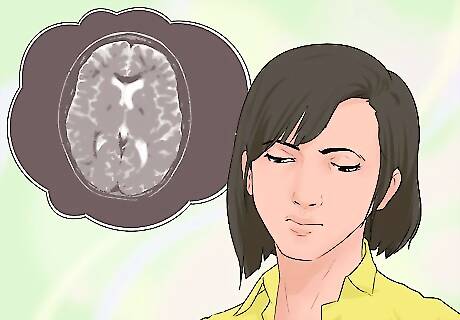
Identify cerebral toxoplasmosis. This occurs when the parasite causes lesions or cysts in your brain. If you have cerebral toxoplasmosis it would be treated with medications to kill the infection and reduce the swelling in your brain. Cerebral toxoplasmosis can cause headaches, confusion, loss of coordination, seizures, fever, and slurred speech. The doctor will likely diagnosis it using an MRI scan. During this test a large machine uses magnets and radio waves to create images of your brain. This is not dangerous for you, but it does involve lying on a table that slides into the machine, which may be an issue if you are claustrophobic. In rare, treatment resistant cases, a brain biopsy might be performed.
Preventing Toxoplasmosis
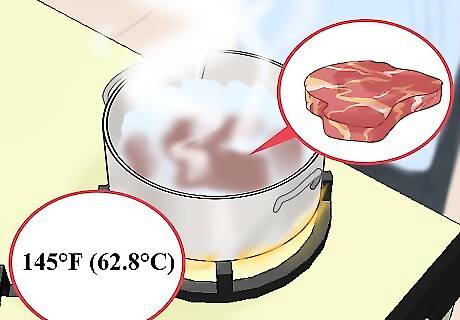
Reduce your risk of eating infected foods. Meat, dairy, and plant foods can all be infected with toxoplasmosis. Avoid eating raw meats. This includes rare meats and cured meats, particularly lamb, mutton, pork, beef, and goat. This includes sausages and smoked hams. If the animal was infected with toxoplasmosis, the parasites may still be alive and infectious. Cook whole cuts of meat to at least 145°F (62.8°C), ground meat to at least 160°F (71.1°C), and poultry to at least 165°F (73.9°C). Measure the temperature with a cooking thermometer in the thickest part. After you stop cooking, the temperature should remain at that temperature or above for at least three minutes. Freeze meat for several days below 0°F (-17.8°C). This will reduce, but not eliminate, the risk of infection. Wash and/or peel all fruits and vegetables. If the fruit or vegetable was in contact with contaminated soil, it can transmit toxoplasmosis to you unless you wash it or peel it. Do not drink unpasteurized milk products, eat cheese made from unpasteurized milk or drink untreated water. Clean all cooking implements and surfaces (such as knives and cutting boards) that came into contact with raw or unwashed foods.

Avoid coming in contact with infected soil. Soil can be infected if an infected animal has recently defecated in that area. You can reduce your risks by: Wearing gloves when gardening and washing your hands thoroughly afterwards. Covering sandboxes to prevent cats from using it as a litter box.
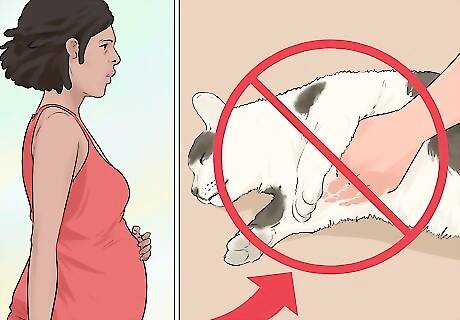
Manage the risk presented by pet cats. The Centers for Disease Control and Prevention say that it is not necessary to give up your cat if you are pregnant. There are several things you can do to reduce your risk including: Getting your cat tested to see if he is carrying toxoplasmosis. Keeping your cats indoors. Cats become infected when they come in contact with the feces of other infected cats or by eating infected prey animals. Keeping your cat inside will reduce both risks. Feed your cat commercial canned or dry food. Do not give your cat raw or undercooked meat. If the cat's food is infected, the cat can become infected. Not touching stray cats, especially kittens. Not getting a new cat with an unknown medical history. Not changing the litter box if you are pregnant. Ask someone else to do it. If you must change it, wear disposable gloves, a face mask, and wash your hands afterwards. The box should be changed daily because the parasite generally requires one to five days to become infectious in feces.



















Comments
0 comment